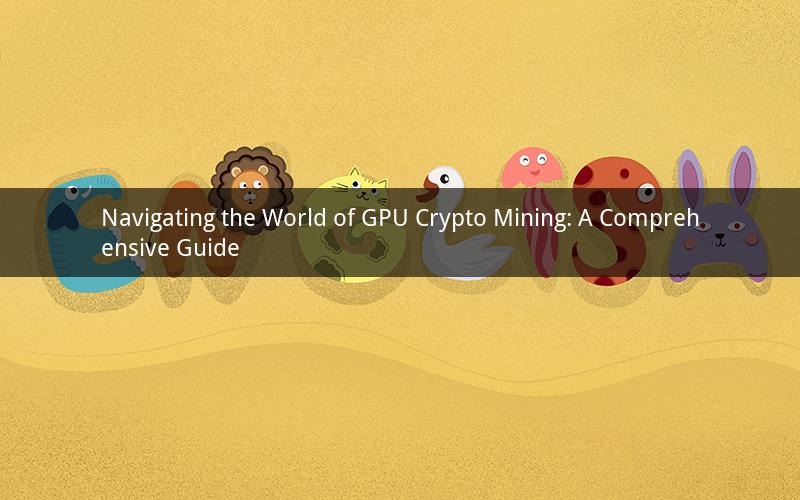
Introduction:
Cryptocurrency mining has gained immense popularity over the years, with individuals and organizations alike jumping on the bandwagon to capitalize on the potential profits. Among the various hardware options available for mining, GPUs (Graphics Processing Units) have become a favorite choice due to their relatively high hash rates and lower costs compared to ASICs (Application-Specific Integrated Circuits). However, one question that often lingers in the minds of potential miners is whether crypto mining is hard on their GPUs. In this article, we will delve into the intricacies of GPU mining, its impact on GPUs, and provide you with valuable insights to make an informed decision.
1. Understanding GPU Mining:
GPU mining involves utilizing the processing power of GPUs to solve complex mathematical problems in exchange for cryptocurrency rewards. Unlike traditional CPUs, GPUs are designed to handle parallel processing, making them highly efficient for mining tasks. When a GPU mines a cryptocurrency, it performs calculations that validate transactions and add new blocks to the blockchain.
2. The Impact of Crypto Mining on GPUs:
While GPUs are well-suited for mining, they are not immune to the stresses of the process. Here are some key aspects to consider:
a. Heat Generation: Mining cryptocurrencies is a computationally intensive task that generates a significant amount of heat. GPUs are no exception, and prolonged mining can lead to overheating. Adequate cooling solutions, such as efficient airflow and cooling systems, are crucial to prevent overheating and potential damage to the GPU.
b. Power Consumption: GPUs require a substantial amount of power to operate at optimal performance. Mining can lead to increased power consumption, which can result in higher electricity bills. It is essential to assess your electricity costs and ensure that the potential profits outweigh the expenses.
c. Wear and Tear: Continuous mining puts a strain on GPUs, leading to increased wear and tear. Over time, this can lead to reduced performance and potential hardware failures. Regular maintenance, such as cleaning and ensuring proper ventilation, is essential to prolong the lifespan of your GPU.
3. Factors Affecting GPU Performance in Mining:
Several factors can impact the performance of GPUs in mining, including:
a. GPU Model: Different GPU models have varying performance capabilities. High-end GPUs, such as NVIDIA's RTX 3080 or AMD's Radeon RX 6800 XT, tend to offer higher hash rates and better profitability. However, they also come with higher costs and power requirements.
b. Mining Algorithm: Different cryptocurrencies use different mining algorithms. Some algorithms, like Ethereum's Ethash, are more GPU-friendly, while others, like Bitcoin's SHA-256, are more ASIC-friendly. Choosing the right algorithm for your GPU can significantly impact your mining efficiency.
c. Mining Rig Setup: The overall setup of your mining rig, including the number of GPUs, cooling system, and power supply, can affect performance. Optimizing these components can lead to better hash rates and overall efficiency.
4. Tips for Minimizing GPU Strain During Mining:
To mitigate the strain on your GPU during mining, consider the following tips:
a. Monitor GPU Temperatures: Regularly monitor your GPU's temperatures using software tools. If temperatures exceed safe limits, take immediate action to improve cooling.
b. Adjust Power Settings: Adjusting the power settings of your GPU can help optimize performance and reduce heat generation. Tools like MSI Afterburner or EVGA Precision allow you to tweak these settings.
c. Optimize Mining Software: Ensure that you are using the most efficient mining software for your GPU and algorithm. Different software options may offer varying performance and stability.
5. Frequently Asked Questions (FAQs):
Q1: Can mining damage my GPU?
A1: Yes, mining can cause wear and tear on your GPU over time, leading to reduced performance and potential hardware failures. However, by implementing proper cooling, power management, and maintenance, you can minimize the risk of damage.
Q2: Which GPU is the best for mining?
A2: The best GPU for mining depends on the specific cryptocurrency and your budget. High-end GPUs like the NVIDIA RTX 3080 or AMD Radeon RX 6800 XT tend to offer better performance, but there are also cost-effective options available for those with a tighter budget.
Q3: Can I mine with a regular GPU?
A3: While regular GPUs can be used for mining, they may not offer the same level of performance as dedicated mining GPUs or high-end consumer GPUs. However, they can still be a viable option for those looking to start mining on a budget.
Q4: How long can a GPU mine before it needs to be replaced?
A4: The lifespan of a GPU in mining depends on various factors, including the intensity of mining, cooling, and overall maintenance. With proper care, a GPU can last several years, but performance may degrade over time.
Q5: Can I mine while using my GPU for gaming?
A5: It is possible to mine while using your GPU for gaming, but it may lead to a decrease in gaming performance. Mining consumes a significant amount of power and generates heat, which can impact the overall performance of your system.
Conclusion:
In conclusion, while GPU mining can be a lucrative endeavor, it is crucial to understand the potential impact on your GPU. By implementing proper cooling, power management, and maintenance, you can mitigate the strain on your GPU and maximize its lifespan. Remember to research the best GPU for your specific needs, optimize your mining rig setup, and stay informed about the latest developments in the crypto mining world. With careful planning and execution, you can embark on a successful GPU mining journey.